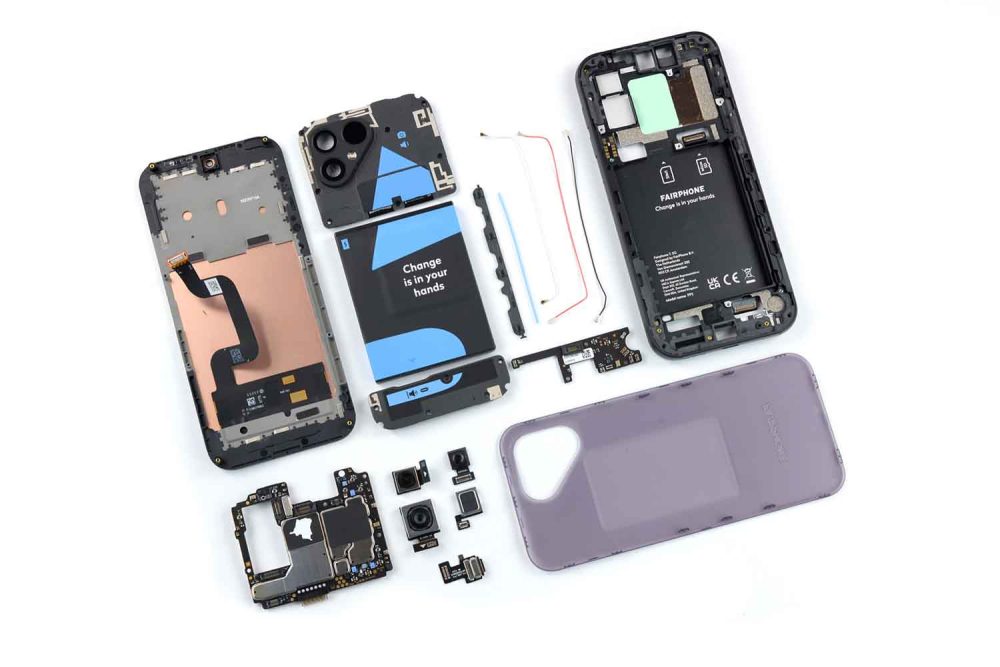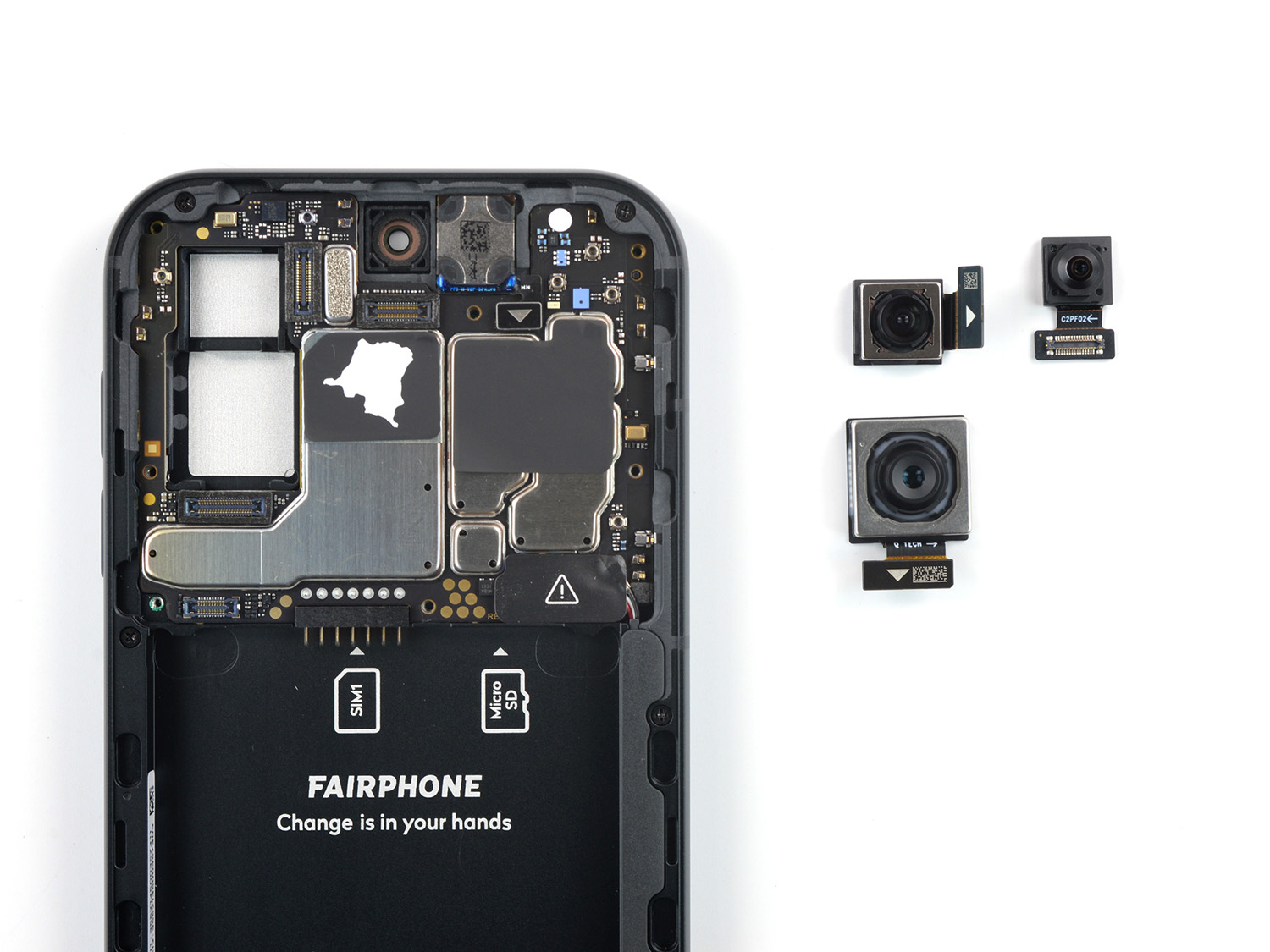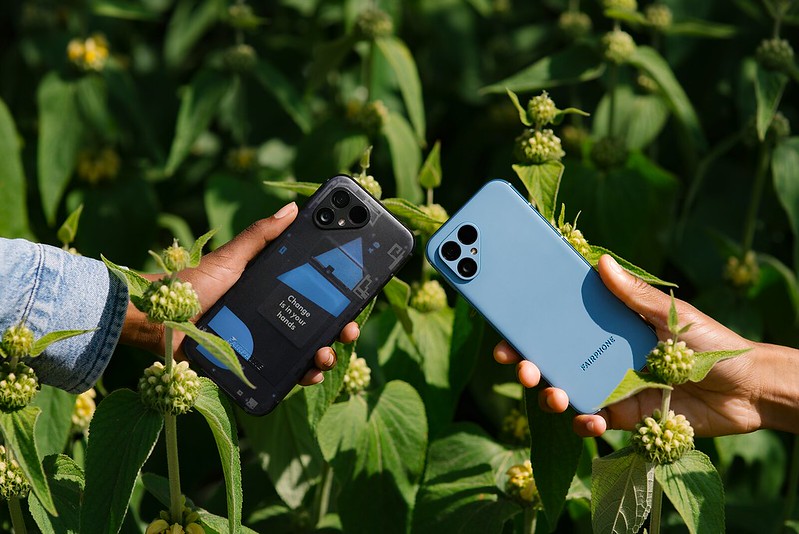Smartphone manufacturers such as Apple, Samsung and Xiaomi are trying to become more sustainable by using recycled materials and omitting chargers. They are often accused of greenwashing in this regard, as sustainability is not implemented consistently enough in both the production and design of the devices. Manufacturers such as Shiftphone and Fairphone, on the other hand, show how mobile phones can actually become more sustainable. Thanks to their modular smartphone design, their phones can be repaired without any expertise or possible consequential damage.
The manufacturer Fairphone recently received an award for particularly good repairability for its latest model. This comes from iFixit, a company that specialises in the repair of technology and smartphones in particular.
Although Fairphone was able to make the fifth generation of its smartphones even more modular, one feature of the latest model bothers us. But how do modular smartphones actually work?
How modular smartphones work
In order to build more compact smartphones and reduce production costs, most mobile phone manufacturers solder and glue the required components. In the event of damage, it is therefore quite expensive to replace sensitive parts such as the battery, camera or display. With manufacturers such as Samsung, Xiaomi or Apple, repairs must therefore be carried out by experts, which is costly and involves a certain risk.
Thanks to its modular design, the Fairphone 5 is different. As iFixit confirmed in their analysis, most parts can be replaced completely independently without specialist knowledge. All consumers have to do is remove the back of the mobile phone with a little muscle power and unscrew the defective components.
As Fairphone provides both instructions and spare parts, the Fairphone 5 can be repaired particularly efficiently. In the fifth generation, Fairphone has been able to improve modularity once again, as the camera components can now also be replaced individually. With its predecessor, the Fairphone 4, the entire camera module had to be replaced.
Full marks thanks to longer software updates
However, the latest Fairphone ultimately achieved the maximum number of points in the iFixit test thanks to an improved update promise. Fairphone states that it will provide the smartphone, which was released in 2023, with security updates for eight years. Five Android versions are also to be supported within this period, which can bring new functions and improved performance to the mobile phone.
Other manufacturers have also been advertising an improved update guarantee for several years. In comparison, Fairphone is particularly consistent with eight years of security updates. The company almost achieves the ideal of a smartphone that can be used for 10 years without a total loss. This is the aim of the “10-year-smartphone” campaign, in which the refurbished marketplace Back Market is also involved alongside Fairphone.
At the same time, the Fairphone 5 already fulfils the new requirements that the EU will introduce at the end of 2024. These will require mobile phone manufacturers to provide new devices with functional and security updates for at least five years after their release.
Backwards compatibility is the next goal
Even though the Fairphone 5 is significantly more sustainable compared to many fast-tech models, we take a critical view of one aspect of the smartphone. This is because iFixit only assesses the repairability of the new model in their analysis. However, the Fairphone 5 was released just two years after its predecessor, the Fairphone 4 – and its hardware is incompatible with the new components.
When asked why two generations of devices have been released in such a short time, Fairphone told us that it was “not the aim of the new Fairphone generation” to generate purchase requests. They do not want “customers to swap their working Fairphone 4 for a Fairphone 5.” The Fairphone 4 will therefore continue to be sold alongside the Fairphone 5.
Instead, Fairphone developed the fifth generation to realise even better repairability. The manufacturer “decided in favour of a significantly different internal layout to the Fairphone 4 for various reasons”. Precisely in order to be able to design the individual components of the mobile phone camera modularly.
In future, however, Fairphone plans to realise “greater backwards compatibility from one model to the next”. However, the manufacturer also sees the risk of customers replacing functioning modules with more powerful components. This could result in electronic waste, which Fairphone naturally wants to avoid.
“The Fairphone 5”, the manufacturer continues, “is a device for customers who need a new phone in 2023 that will remain relevant for many years to come”. And with a longer update guarantee and improved modularity, it certainly seems to have achieved this.










